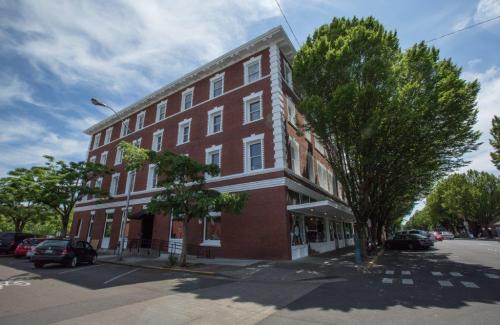Federal Home Improvements Programs for Energy Saving and Sustainability
Attention homeowners! There are some excellent opportunities for money and energy saving measures for your home available now. There are possibilities for these programs to eventually apply to renters as well, but we’re currently waiting on clarification in that regard, so renters, stay tuned.
Get a home energy audit: This is a room-by-room walk-through that will evaluate your home’s energy use, conducted by a licensed professional. This can help you identify energy deficiencies and spot where you may be losing energy. With this audit, recommendations specific to your home will be given to help you save money on your bills and find the energy efficiency upgrades that will best fit your home.
- How it saves you money: There’s a tax credit available to cover 30% of the cost of the audit, up to $150.
- Qualifications: Everyone qualifies but the amount of your savings will be dependent on your tax bill. The credit can be applied to the amount you owe on your federal taxes, but if you don’t owe anything to begin with, you won’t receive a refund for the credit.
- Availability: This tax credit is currently available from now through the end of 2032.
- For more information: Visit the Professional Home Energy Assessment page with the U.S. Department of Energy. There are additional free tools for an online home assessment and contact information to speak with a Home Energy Advisor on the Energy Trust of Oregon’s website.
Solar Panels, Wind Turbines, Geothermal Heat Pumps, and Standalone Batteries: Clean energy technologies for your home including all of the above and the standalone batteries used to store the electricity produced by these renewable sources now qualify for tax credits.
- How it saves you money: There’s a tax credit available to cover 30% of qualifying purchases with no cap on the total purchase price. This credit can also be used on labor, permits, and inspection. Note: The credit amount drops to 26% in 2033, and to 22% in 2034 before phasing out in 2035.
- Qualifications: Everyone qualifies but the amount of your savings will be dependent on your tax bill. The credit can be applied to the amount you owe on your federal taxes, but if you don’t owe anything to begin with, you won’t receive a refund for the credit.
- Availability: This tax credit is currently available from now through the end of 2034.
- For more information: Check out the FAQs About Energy Efficient Home Improvements and Residential Clean Energy Property Credits with the Internal Revenue Service.
Energy-Saving Renovations and Appliances: Energy-saving improvements such as insulation, sealing air leaks and installing energy-efficient exterior doors, windows and skylights are eligible for tax credits. As are purchasing efficient appliances such as water heaters, central air conditioners and boilers.
- How it saves you money: 30% of the cost of some appliances that meet energy certification requirements, up to $600 per item, are eligible for tax credits. Additionally, home efficiency upgrades may qualify. There’s an annual limit of $1,200 which includes the $150 credit you can claim for a home energy assessment. Some examples of eligible amounts are $1,200 for insulation, $500 for doors and $600 for windows and skylights.
- Qualifications: Everyone qualifies but the amount of your savings will be dependent on your tax bill. The credit can be applied to the amount you owe on your federal taxes, but if you don’t owe anything to begin with, you won’t receive a refund for the credit.
- Availability: This tax credit is currently available from now through the end of 2032. It’s available through 2027 for hot water boilers.
- For more information: Check out the I.R.S. Energy Star Tax Credit guide and fact sheet.
Install a Heat Pump: The purchase of new heat pumps (essentially two-way air conditioners that will efficiently heat and cool your home) as well as heat pump water heaters qualify for tax credits.
- How it saves you money: 30% of the costs of purchasing and installing a heat pump or a heat pump water heater is eligible to qualify for tax credits, up to a maximum of $2,000 per year. This is in addition to the $1,200 available in tax credits for other energy-saving renovations and appliances.
- Qualifications: Everyone qualifies but the amount of your savings will be dependent on your tax bill. The credit can be applied to the amount you owe on your federal taxes, but if you don’t owe anything to begin with, you won’t receive a refund for the credit.
- Availability: This tax credit is currently available from now through the end of 2032.
- For more information: Check out the I.R.S. Energy Star Tax Credit guide and fact sheet.
Renovations that Reduce Energy Use: Renovations you make that lower energy use in your home may be eligible for a rebate. Examples include adding insulation, sealing air leaks, replacing exterior doors and windows and making ventilation improvements.
- How it saves you money: There are two factors that will determine the amount of your rebate; your household income and the amount of energy you will save with the renovations. The latter can be determined through modeling and measurements. The rebate amount for the modeled energy savings route will be between $2,000 to $4,000, or 50% of the project costs with additional incentives doubled for low-income households, up to 80% of the project costs. There’s no maximum cap on savings through the measured savings route, where households use their utility bills to show evidence of the reduction in energy use.
- Qualifications: Everyone qualifies, but low-income households can be eligible to receive more money back.
- Availability: This tax credit is expected to be available later this year and last through September 30, 2031, or until funding for the program is fully utilized. Updates on implementation in Oregon will be added as they’re announced.
- For more information: Check out the fact sheet on Rewiring America.
Discounts for Energy-Efficiency Upgrades for Lower-Income Households: Upfront rebates are available for low and moderate-income households installing Energy Star certified electric appliances. These can include electric stoves and heat pump heating and cooling systems. These rebates can also be applied to insulation and electric wiring.
- How it saves you money: There are upfront rebates available for qualified purchases. For low-income households, 100% of the project costs are covered up to the maximum rebate amount, and 50% of the project costs are covered for moderate-income households. The maximum rebate amounts vary by category:
- Electric stoves and Heat Pump Clothes Dryers- $840
- Heat Pump Water Heaters- $1,750
- Heat Pump Heating, Ventilation and Air Conditioning Systems- $8,000
- Installing insulation and sealing air leaks- $1,600
- Electric wiring- $2,500
- Breaker box installation- $4,000
- Qualifications: Low and moderate-income households only.
- Availability: This rebate is expected to become available later this year and last through September 30, 2031 or until funding for the program is fully utilized. Updates on implementation in Oregon will be added as they’re announced.
- For more information: Check out the U.S. Department of Energy Home Energy Rebate Programs site. And the information sheet posted by Rewiring America on the High-Efficiency Electric Home
Contact For Further Information:
Brigetta Olson
Housing and Neighborhood Services Division
541-766-6555


